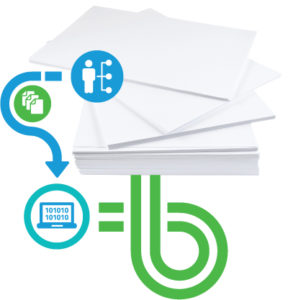Buyers have control of today’s purchasing process, so engaging them is essential for sellers. That’s one reason why the No. 1 critical customer communications priority among U.S. marketing executives is to improve the customer experience1. And many seek a valued partner for help developing the customer experience strategy, building the business case, managing the data and measuring the results1.
So said Barb Pellow, group director, InfoTrends, during a recent Xerox Business Development Webinar on “The Year of Customer Experience,” which she led. She focused on two opportunities for print providers: to be the marketer’s customer experience partner and to optimize the experience for their own customers.
Data is Central to Customer Experience

Customer experience is the journey consumers make from initial research to becoming a prospect, customer, repeat customer and potentially, advocate. Managing the process well can strengthen sales and customer relationships.
Many online interactions in this journey are shaped today by customer data, which is essential to developing the relevant, personalized messaging that drives business results. The importance of data can’t be understated, Pellow said. Ninety-nine percent of companies think some form of data is essential to marketing success2, and the top two ways marketers want to improve the customer experience are data-related, through better data-driven personalization and better-tailored offerings1.
For print providers, “The services that will differentiate you longer term with enterprise clients all relate to data,” Pellow said. And much mainstream work now requires data expertise. More than 61 percent of direct marketing campaigns are either personalized one-to-one (27.7 percent) or segmented one-to-few (33.6 percent)3, and InfoTrends projects that color variable data print for commercial and transactional work will grow by a 15.3 percent compound annual growth rate through 2019.4
Create a Seamless Experience
The most effective customer experience programs deliver cohesive marketing messaging across all channels to create a seamless experience, Pellow said. Print remains a prominent channel that is linked with digital media by 35 percent of marketers to integrate social media, boost response rates, make traditional media interactive and reach a broader audience3.
The most critical complement to print is mobile, which can make print interactive and the interactions measurable through use of smart-device-readable codes. “At InfoTrends we think mobile will become the primary source of portable media,” Pellow said. “As mobile continues to evolve and grow, print and other traditional platforms will need to blend with the mobile world.”
Develop Industry Expertise
In today’s highly competitive graphic communications market, providers differentiate less on traditional speed, quality and cost metrics and more around knowledge and expertise of their customers’ businesses, Pellow said. More than half expect their business direction in the next five years will include focusing on an industry specialty5. Many also are gaining entrée to their customers’ strategy discussions by taking an agency-like approach, by building or acquiring services, and by developing a consultative sales force.
That resonates with marketers: 79 percent say a key criteria in vendor selection is the capability to offer expert advice3.
Make it Easy to Do Business With You

All of this is meaningless if you are difficult to work with. For print providers, being easy to do business with means enabling online sales and management of marketing assets. Already, a third of print work is ordered over the Web, and that will grow over the next two years by 18.8 percent for small and medium sized businesses and by 11.5 percent for enterprises3.
“If you don’t have a Web-to-print solution in place today, adopt one or die,” Pellow said. Long-term success requires providing similar access from mobile devices and achieving the operational excellence that speeds up deliveries and controls costs, she added.
The bottom line: to help their marketing customers develop a better customer experience, providers need to be a partner. After all, would you trust your customers’ experience to anyone less?
To hear a replay of the webinar, click here. To sign up for the next session in the Xerox Business Development Webinar Series, an Aug. 3 session on “Understanding Customers’ Needs,” click here.
—
- From Customer Engagement Technologies State of the Market Study, InfoTrends 2015
- From Data Quality Benchmark Report, Experian 2015
- From Micro to Mega. Trends in Business Communications, InfoTrends 2015.
- InfoTrends 2015
- From U.S. Production Software Investment Outlook, InfoTrends 2015



